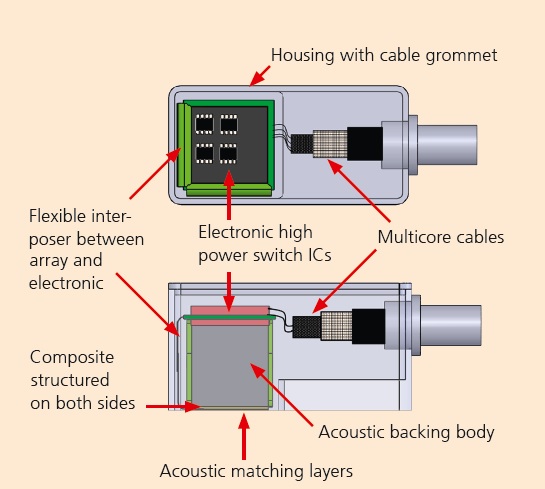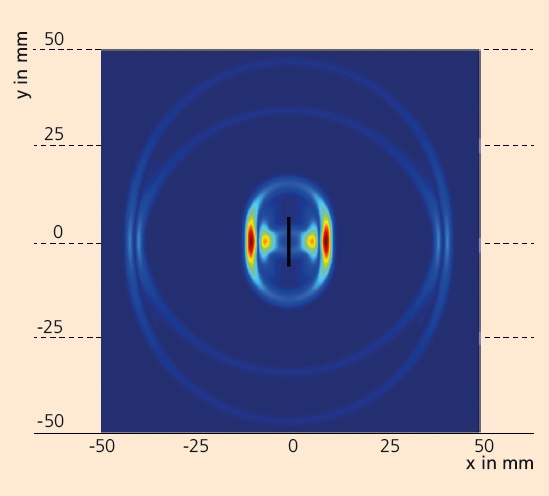Different transducers are used for different applications in ultrasonic non-destructive testing, based on single- or multichannel techniques. Single-element (monolithic) probes have a fixed focus that depends on the design. If greater flexibility is needed, phased array probes with multiple elements are used. With appropriately delayed excitation of the individual elements, the wave front can be swept and focused on any point in the test object. A distinction is drawn between linear arrays, which focus in a plane perpendicular to the active aperture axis, and matrix arrays, which are able to focus inside the whole volume covered by the probe.
Biplane phased arrays combine the low costs of a relatively simple probe design with the flexibility of conventional matrix arrays.
Biplane array design
A biplane array consists of a piezoelectric layer with a conventional line electrode structure on the top and a second line electrode structure rotated by 90° on the bottom side of the piezo layer.
Modeling of the sound field
For calculation of the sound field of a biplane array, the excitation by a strip element and a quadratic crossing element must be considered. With these basic sound fields, all other configurations can be obtained by the superposition principle. The numerical CEFIT-PSS technique, a hybrid method developed at IKTS for simulation of spatiotemporal wave fields, including all relevant physical wave effects, was used for the calculations.
Principle of operation of a biplane array
In conventional operation mode, the biplane array offers the possibility of sweeping and focusing the ultrasonic beam in two planes. A 3D mode in which selected electrode strips on the top and bottom of the piezo layer are excited is also possible. For this, the electrical activation of the electrodes can be dynamically varied.
Compared with a fully electrically connected matrix array, the biplane array requires significantly fewer elements, i.e., only N or at most 2N independent channels instead of N x N channels. This aspect significantly lowers the technical requirements that must be met by the ultrasonic hardware and hence the manufacturing costs for a complete matrix UT system.

